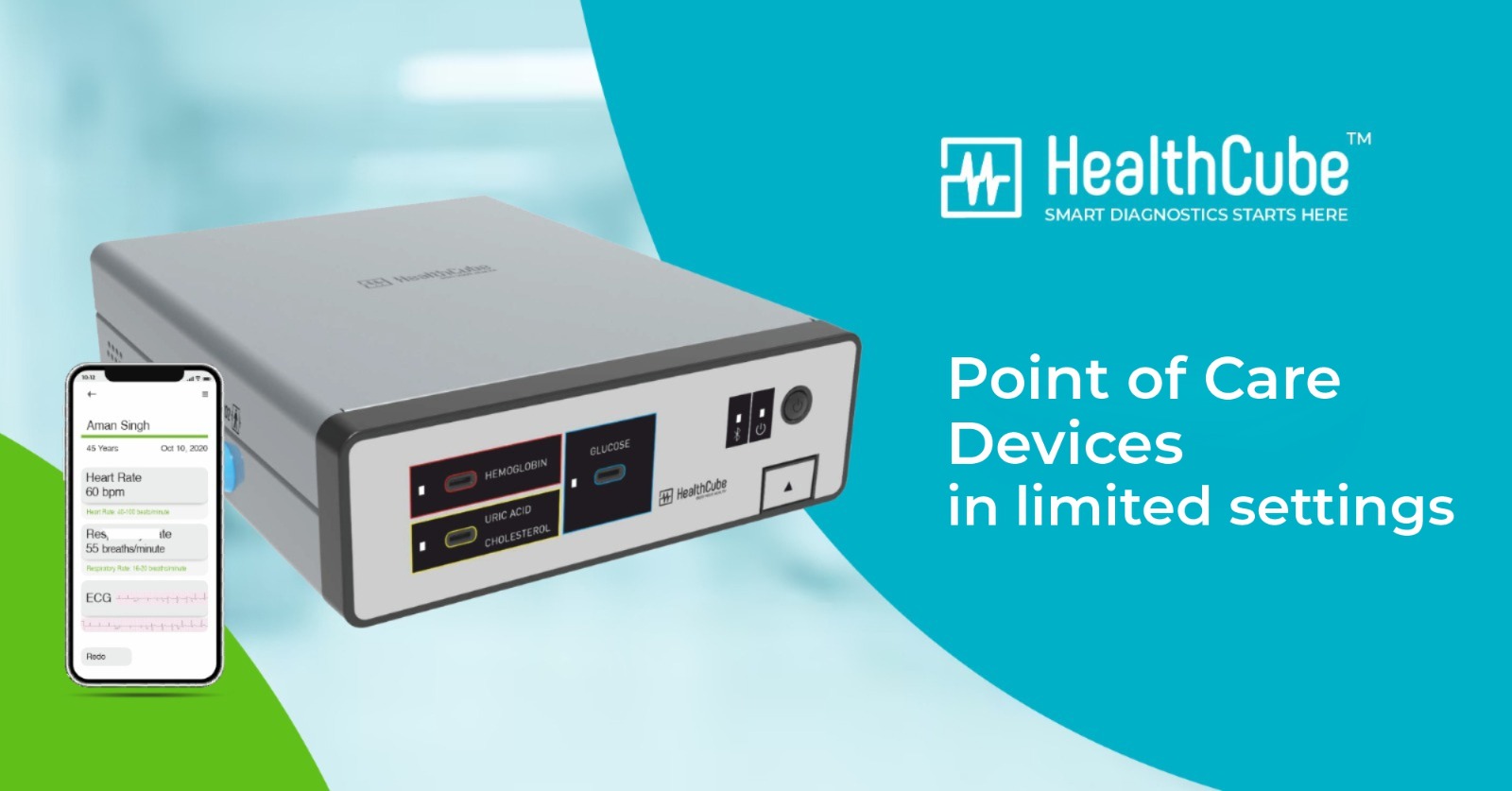What are Point-of-care medical devices
Point-of-care medical devices are in vitro diagnostics used by health care professionals to obtain results rapidly near or at the site of a patient, which facilitates disease diagnosis, monitoring, and management. It enables quick medical decisions, as it can identify disease at a very early stage leading to improved health outcomes for patients by enabling the early start of treatment.
The point-of-care testing era began in 1962, when a new, rapid method to measure blood glucose concentrations was developed, and was strengthened in 1977, with the introduction of a rapid pregnancy test. Point-of-care testing gained traction in clinics and hospitals in the early 1990’s with the introduction of small, portable devices that could measure several parameters in emergency rooms. The emergence of point-of-care tests has diversified from clinical settings to resource limited settings. They have the potential to improve health-care services and patient-centered outcomes in health centers with limited infrastructure.
POCT vs Conventional devices
The conventional clinical diagnostic procedure requires high-end and costly instruments, an expert technician for operation and result interpretation, longer time, etc. that ultimately makes it exhausting and expensive.
Uses of POCT
POCT can be used for:
- Therapeutic Aid: Early detection of lifestyle related diseases like diabetes, Hypertension anemia,hyperlipidemia,etc.
- Preventive measures: Targeted Screening in high risk groups. e.g. checking for diseases in patients with positive family history or pregnant females or elderly populations.
- Surveillance measures: Monitoring blood sugars, vitals for eg: Blood pressure
- Infectious disease screening : Timely and efficient screening of infectious diseases like Malaria, HIV, Dengue hence also identifying the endemic nature of the disease.
- POCT in conjunction with EHR (Electronic Health Record) and Telemedicine are a boon in resource limited settings.
Need of POC devices in Indian healthcare system.
India is a growing economy and a hotspot for market investments; however, it is constantly facing challenges concerning the public healthcare system. The country has a huge resource gap of over 4 million health workers; nearly 60% of the existing personnel work in urban areas whereas 70% of the Indian population lives in rural areas. This makes it even more challenging to deliver and maintain the healthcare facilities in resource-limited outreach areas. POC diagnostic devices have been used as a preliminary step in screening the disease that can help in the reduction of burden on the medical ecosystem.
POC tests reduce the TAT drastically, which is necessary and effective in managing critical cases. Low TAT is also favorable in resource-limited settings or for patients visiting from distant places for diagnosis because they do not have to spend extra for travel if the preliminary screening is completed in a single visit. Digitally enabled POC devices such as for blood-pressure, glucose, oxygen monitoring devices, reduce the workloads of nurses and other first-line healthcare workers.Integrating with appropriate software, POC test results can be stored in the medical database and shared with healthcare workers through a software instantly.
Criteria for identifying a reliable and accurate POC device.
World Health Organization (WHO) has laid down ‘ASSURED’ criteria for POC tests in resource-limited settings; (i) affordable (by those at risk), (ii) sensitive (few false negatives), (iii) specific (few false positive), (iv) user-friendly (simple to perform and needs minimum training), (v) rapid (producing results within few minutes) and robust (rigid storage conditions), (vi) equipment free (no complex system), (vii) delivered (to needy) . Therefore, the devices fulfilling the above criteria have the potential application in the Indian healthcare system.
The HealthCube device ecosystem abides the guidelines by WHO.
Author– Dr. Eshani Saxena, Public Health Specialist


